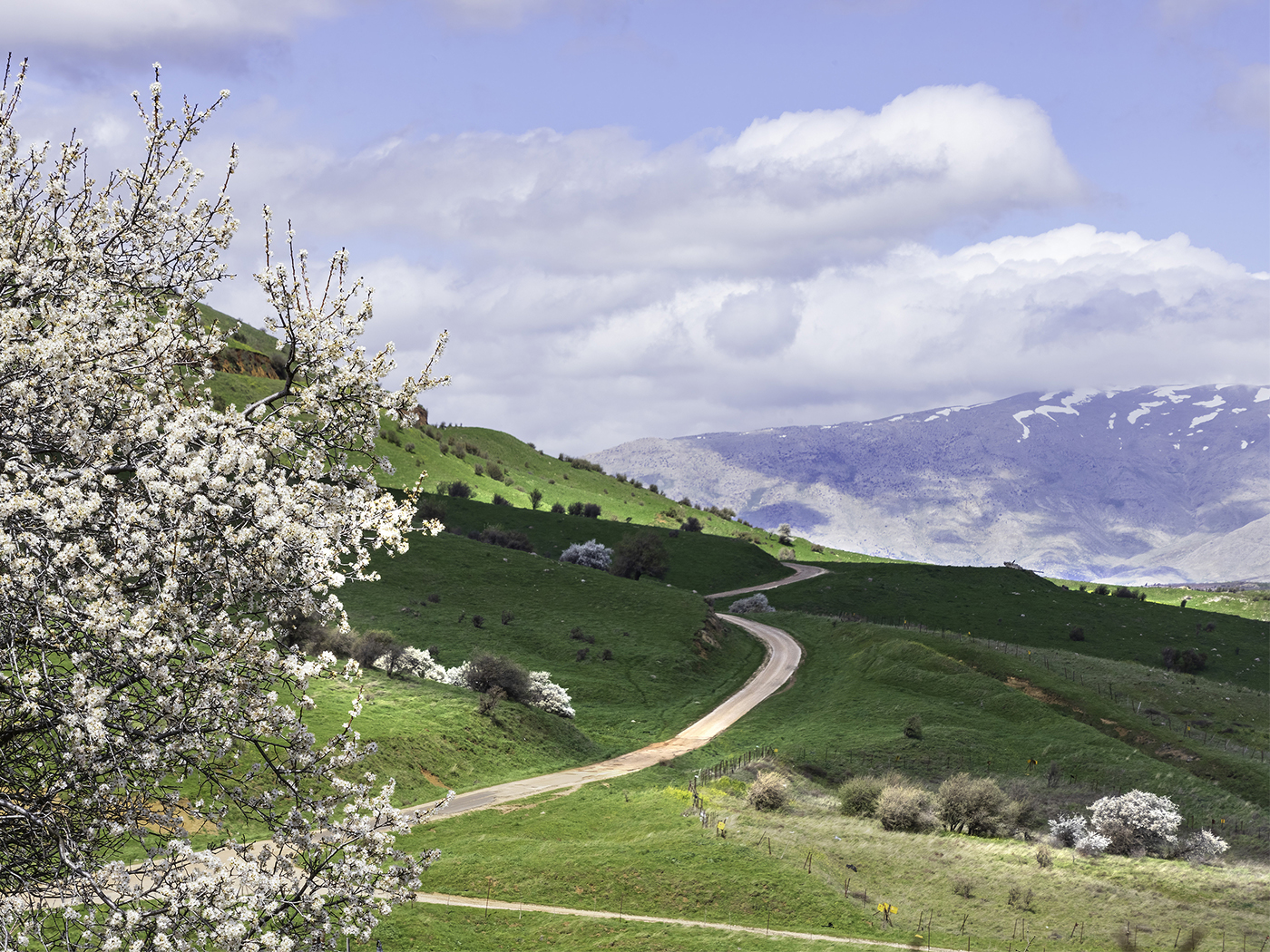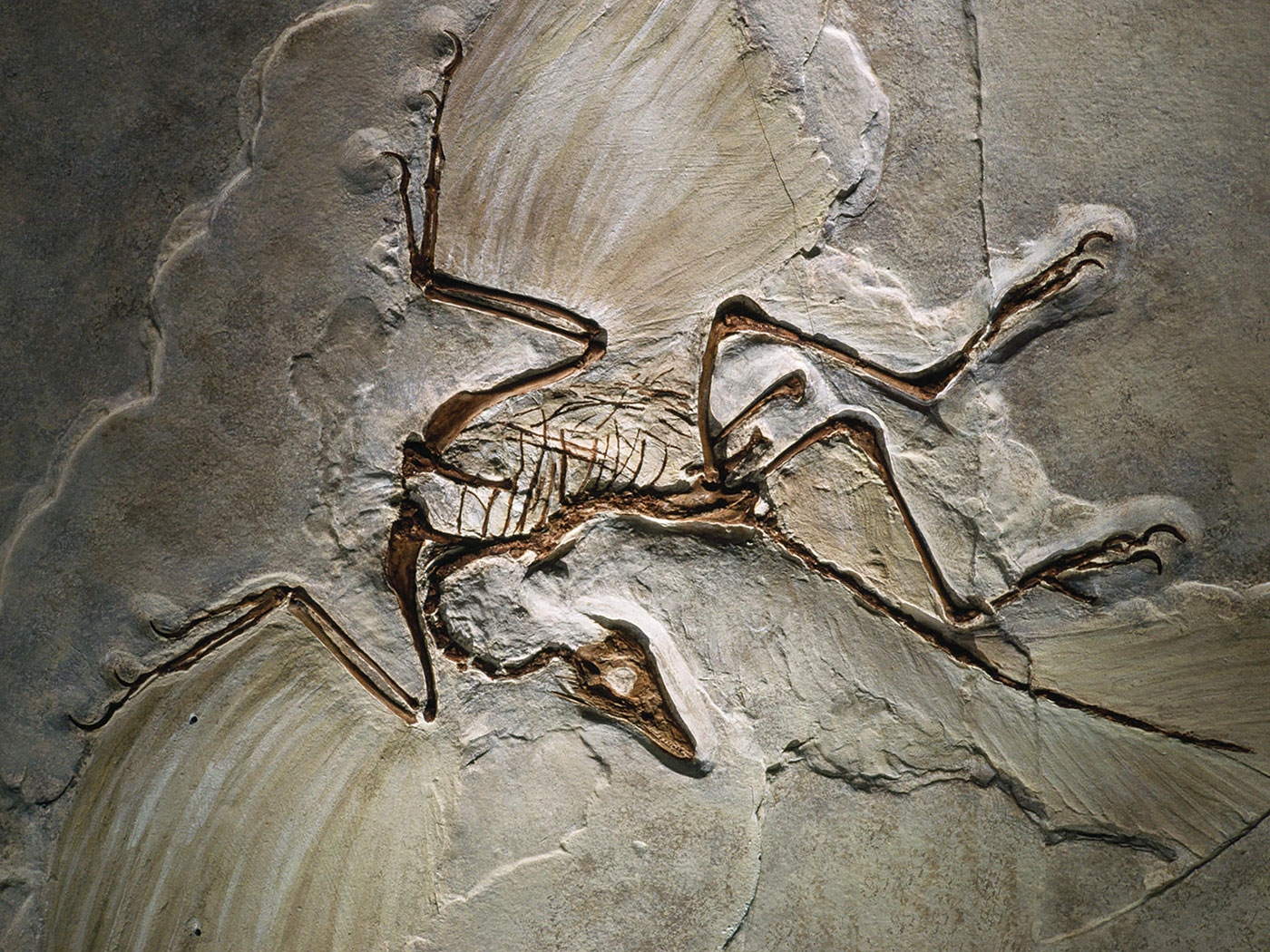Sedimentary rock, which makes up most of the surface cover of the continents, is by definition deposited by moving fluids. Normally, the sediments contain evidence of their waterborne history in what is called sedimentary structure. These features may be in the form of cross bedding, paleo-current markers, graded bedding, laminations, ripple marks, etc. If the hardening conditions are met (presence of a cementing agent and pressure to drive water from the matrix), the sediments soon harden into sedimentary rock, making the "structure" somewhat permanent, although erosion will eventually destroy even hard rock features.
Rocks abound with such markings, virtually frozen in place in the solid rock. Today when we drive through a road cut, we can observe these reminders of past sedimentary processes and discern many things about the moving fluids, including their direction, velocity, chemistry, etc.
Geologists have traditionally surmised that the deposits are typically the results of the calm and gradual, uniformitarian processes currently in operation. Conversely, more recent geologic models recognize that processes of the past acted at rates, scales, and intensities far exceeding those of today. They were the same basic processes, but were acting at catastrophic levels, accomplishing much depositional work in a short time. Continuing catastrophic action would quickly deposit a second layer, and then more. The question remains: How long ago did this rapid depositional sequence of events take place?
While the muddy sediments are still fresh and soft, the ephemeral sedimentary structure within the deposits is in jeopardy of being obliterated by the action of plant and animal life. We know that life proliferates in every near-surface layer of soft sediment. This is true on land and especially true underwater. Plant roots penetrate through the soil. Animals such as worms, moles, clams, etc., burrow through the sediment, chewing up and turning it over in search of food or shelter through a process called bioturbation. This obviously destroys the sedimentary structure. But how long does it take? A recent study undertook to determine just how much time was required to destroy all remnants of water action.1
Numerous recent storm deposits, dominated by sedimentary structure, were investigated in a natural setting. It was observed that within months, all sedimentary structure was destroyed, so intense is the bioturbation in soft sediments. As long as the sediments are still soft, they will be bioturbated and the structure lost. Yet the geologic record abounds with such sedimentary structure. This comprises a good geologic age indicator, and in fact points to a young earth. Consider the total picture.
Virtually all sediments required only a short time to accumulate in various high energy events. Hardening of sediments into sedimentary rock itself normally takes little time, if the conditions are met. Soft at the start, the sediment's internal character would necessarily be subjected to the rapid, destructive action of plant and animal life. Within a relatively short time (months or years), all sedimentary structure would disappear through their action. The surface of each layer would be exposed to bioturbation until the next layer covered it and until hardening was complete. Sedimentary structure is fragile and short-lived, yet such features abound in nearly every sedimentary rock layer.
Each layer was laid down in a short period of time. The deposit could not have been exposed for long before the next deposit covered it, isolating it from destructive bioturbation. Thus the length of time between the layers could not have been great. The total time involved for the entire sequence must have been short.
Of course, Scripture specifies that the time elapsed for all of creation and earth history has not been very long. Geology confirms it.
Reference
- Gingras, M. K. et al. 2008. How fast do marine invertebrates burrow? Palaeogeography, Palaeoclimatology, Palaeoecology. 270 (3-4): 280-286.
* Dr. Morris is President of the Institute for Creation Research.
Cite this article: Morris, J. 2009. Sedimentary Structure Shows a Young Earth. Acts & Facts. 38 (7): 15.




















